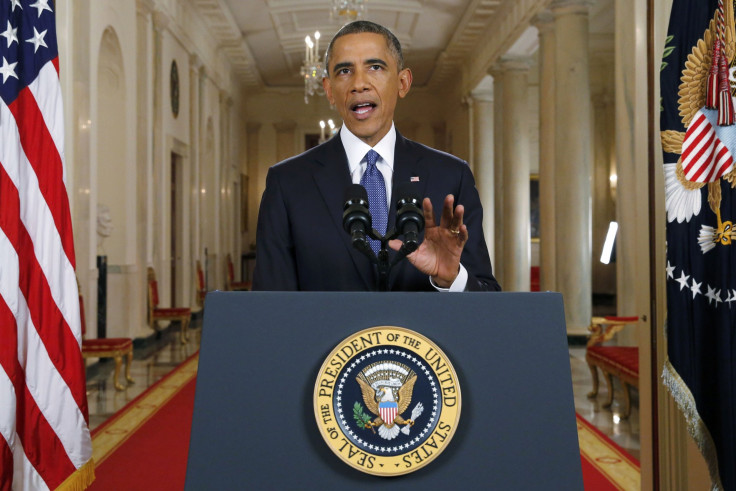Obama Plan: Hope For Tech Workers In Visa Limbo, But The Valley Wanted More

President Obama on Thursday unveiled an immigration plan that should ease thousands of foreign technology workers’ transition from temporary status to green cards. But Silicon Valley giants criticized the proposals for failing to address what they see as the larger problem -- a critical shortage of skilled labor that is forcing companies like Microsoft, Apple and Intel to make an increasing number of their products in other countries.
“This will not deeply impact the reason companies are deciding not to start projects in America,” Scott Corley, executive director of Compete America, told International Business Times. The organization represents a coalition of the tech industry’s biggest players.
The Partnership for a New American Economy, a pro-business think tank, estimates that by 2018 the U.S. will face a shortfall of 200,000 graduates with advanced degrees in STEM (science, technology, engineering and math) fields. Microsoft in 2007 opened a development center in Vancouver, Canada, for workers coming across from India and China in response to what it said was the U.S.’ overly restrictive immigration requirements.
The president laid out his plan as part of a broader initiative to deal with millions of undocumented migrants living in the country’s shadows. “I will make it easier and faster for high-skilled immigrants, graduates and entrepreneurs to stay and contribute to our economy, as so many business leaders have proposed,” Obama said in a speech from the White House’s East Room.
A memo issued Thursday from Department of Homeland Security secretary Jeh Johnson to U.S. Citizenship and Immigration Services officials outlined specific steps the administration plans to take to fulfill the president’s goals. For starters, Johnson directed USCIS to ensure that all employment-based green cards available under law -- the current total is 140,000 -- are actually issued. “Hundreds of thousands of visas have gone unused in the past despite heavy demand for them,” Johnson wrote.
Significantly, Johnson also directed USCIS to lift a restriction that prohibits tech workers on temporary visas, such as an H-1B, to switch jobs in cases where their application for a green card has been approved but the document has not actually been issued. Due to the numerical caps on green cards, that gap can last for a decade or more. “It’s something that could be of huge benefit” to temporary workers, Ted Ruthizer, an attorney at Kramer Levin Naftalis & Frankel and a former president of the American Immigration Lawyers Association, told IBTimes.
DHS will also direct USCIS to extend Optional Practical Training for foreign students studying at U.S. universities. OPT lets them work in their field of study for a limited time after graduation. Students in STEM programs currently can work on an OPT visa for up to 29 months. DHS has tasked USCIS with extending the program, but did not state a specific time frame. The extension would most likely be determined by future rulemaking sessions.
The president’s plan also calls for a liberalization of rules that place restrictions on foreign entrepreneurs’ ability to come to the U.S. to establish startups. “Parole in this type of circumstance would allow these individuals to temporarily pursue research and development of promising new ideas and businesses in the United States, rather than abroad,” Johnson wrote. He also wants USCIS to make greater use of the national interest waiver, which allows noted scholars and experts who might not ordinarily be able to obtain a visa to work in the U.S.
Corley, of Compete America, said the reforms may make it easier for U.S. tech companies to attract and retain foreign workers, but fail to address what its members see as the main problem -- numerical caps on employment-based green cards and temporary work visas are too low to meet demand. The green cards are capped at 140,000 per year, and H-1B temporary visas top out at 85,000 annually. “Having more smart people and their families here, I just don’t see that many people objecting to it,” he said.
Some labor groups welcomed the changes, insofar as they increase worker mobility within the U.S. and increase competition in the market by allowing foreign workers to job hop -- something that’s restricted under the current rules. “We support totally increased rights for people who are living and working here,” Larry Cohen, president of Communications Workers of America, told IBTimes.
CWA represents more than 700,000 workers in technology and communications fields in the U.S., Canada and Puerto Rico. Cohen said he supports any rule changes that allow foreign workers to move from the H-1B to a green card as quickly as possible. “A green card means that the people themselves have some say about their own destiny as opposed to being beholden to a $100 billion company.”
Experts cautioned that many of the changes announced by the administration need to go through rule-making processes that could take months or years to complete. “I think the president is being quite cautious here, not to overstep his executive authority,” Paul Heller, of the Heller Immigration Law Group, told IBTimes. “He wants USCIS and the State Department to say ‘yes’ more. He's asking them to find ways to do so with really very little specific guidance.”
© Copyright IBTimes 2024. All rights reserved.












